
This week was a bit crazy.
The idea was to make a primitive touch screen using capacitive sensors.
First I made the Hello.step.45 board.

This went (shockingly) smoothly and ran on my computer immediately:
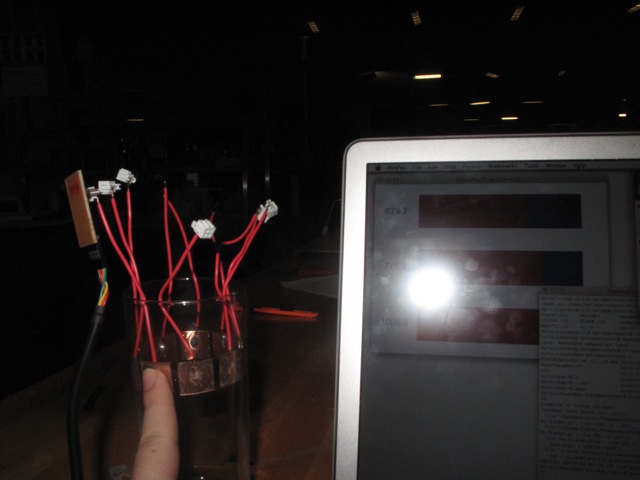
Sorry you can't see the screen.
It responded best to direct touch and didn't seem to have much power to sense nearby signals, which was good for my purposes.
I made a screen out of a glass (just for the convenience of not having to cut glass, as well as the added benefit that it's round, and is therefore a better prototype for a sphere, which is a part of my final project)
It is not meant to sense liquid or something like that, though I realize it is a confusing design.
To try to move from 1 sensor to 10, I first tryed designing my own board by extrapolating from the basic step response board:

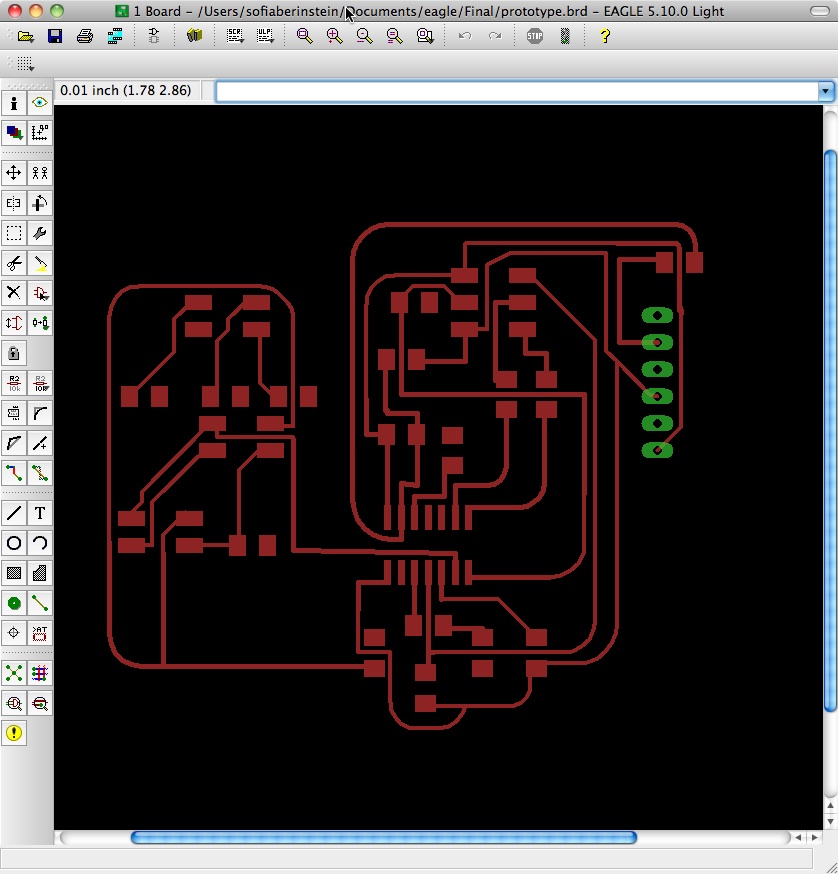
And tryed to print it on the vinyl cutter (which took apx. 8 trys to finally get the force right (96, 1). A change of the blade finally produced a workable print.
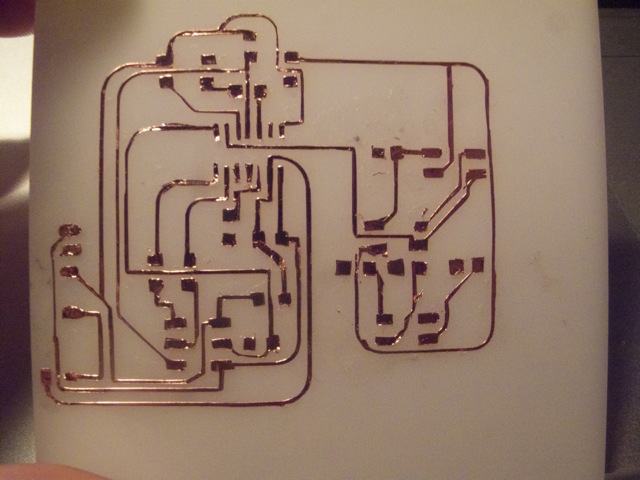
I found that the vinyl cutter, particularly the weeding of a delicate and complex board like this one was much more time consuming than it would have been on the Modela...
And after all that, I didn't read the instructions about the super glue until I had already tried to plug it in...
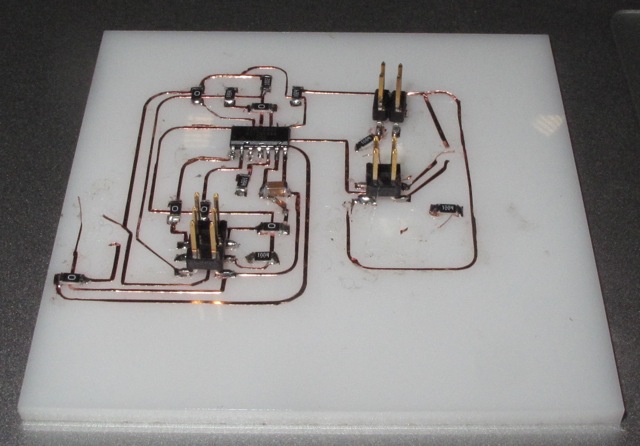
Which was when Ed recommended that I switch to using the Arduino, because this was never going to work. So, even though I know this is really cheating, I listened, since I really wanted the touch array to work.
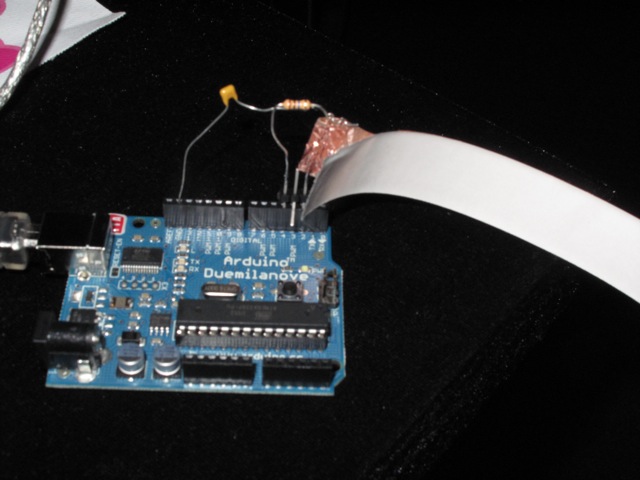
He loaned me this Duemilanove and I used the CapSense library to try to get a capacitance reading on one.
Even though this was Arduino, it took a while to get it to read anything beginning with the recommended 10M resistor. It returned a lot of -2s.
I switched from a laptop to a desktop to see if that was affecting anything. I also tryed capacitors between sense input and ground, but this threw the numbers into the thousands.
Especially to find the right level of resistance...
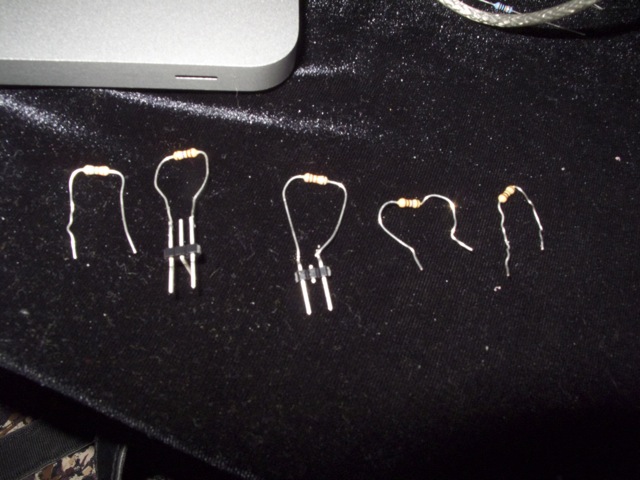
But I finally got it to work! again!
It seemed to work best with a 150K resistor. However when I plugged it in with another pin to see if I could get two of them to work at the same time, it suddenly stopped working again.
And I repeated the process all over again, finally settling on a 1M resistor:
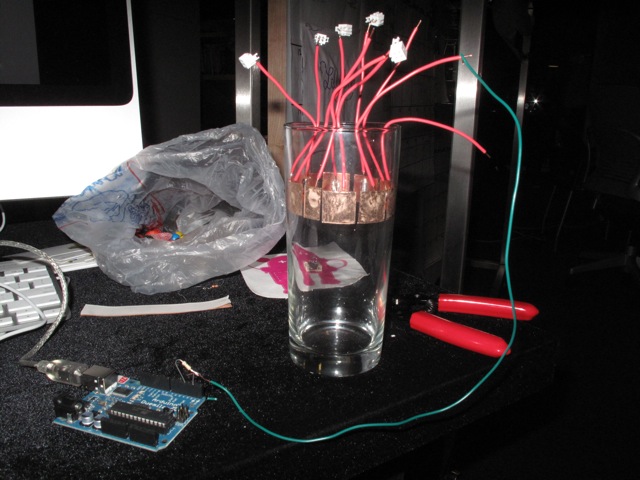
It returned consistent readings when I touched the glass, although it had a little trouble staying at exactly 0 when nothing was touching it.
I then attached resistors to each of the sensors and attached all of those to a charge pin
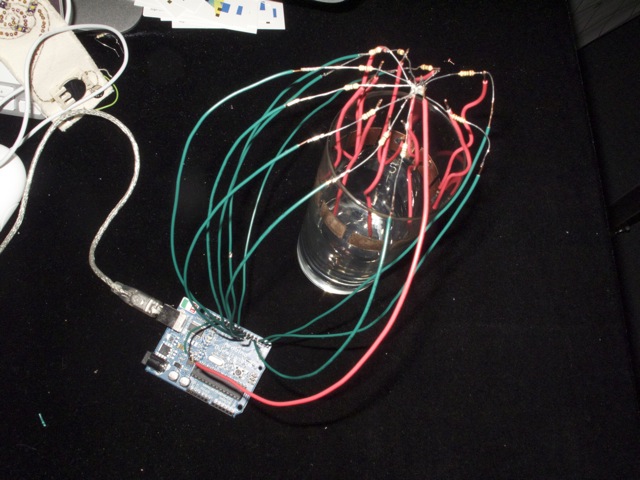
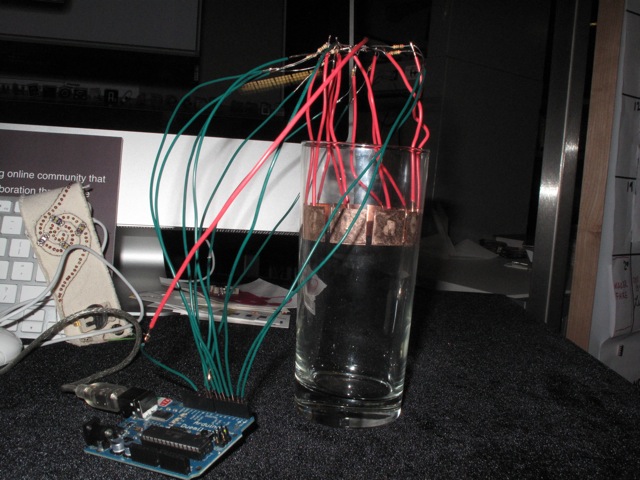
Why does it look like this?
I really can't tell you. But perhaps my brain was trying to create some sort of subconcious recreation of the image on the index page.
I modified the Capsense program to try to accomodate all of the new inputs:
There are still a lot of issues to deal with, and it is yet again producing -2s, but it is communicating at least to some extent with the board:

I have read the tutorial on Processing and would like to start designing an interface, but found that this was too much to do in one week.